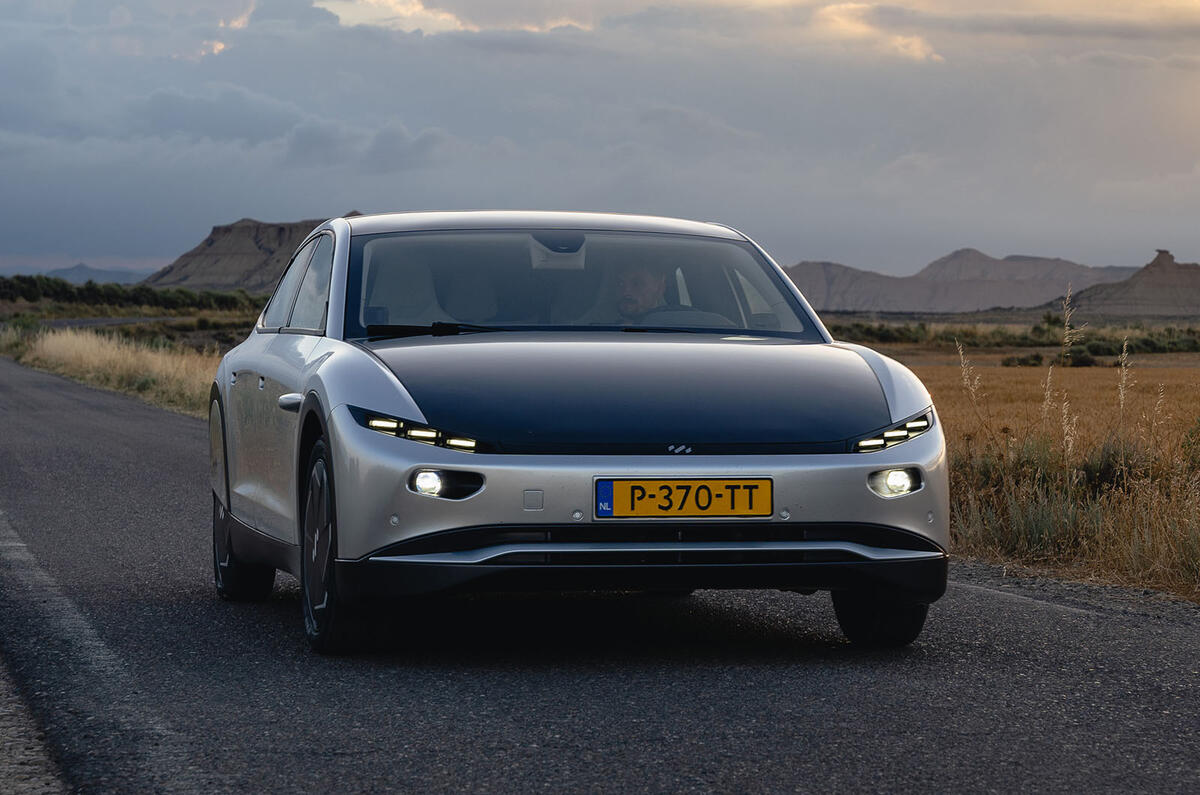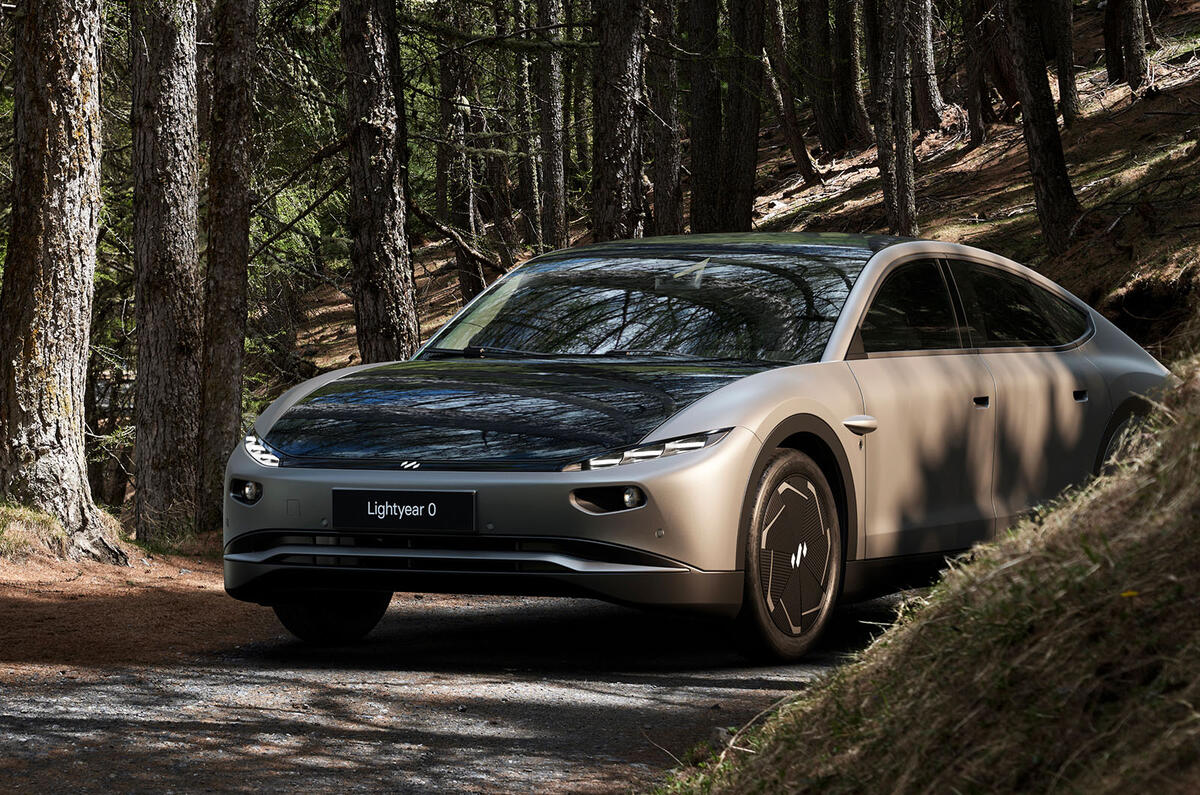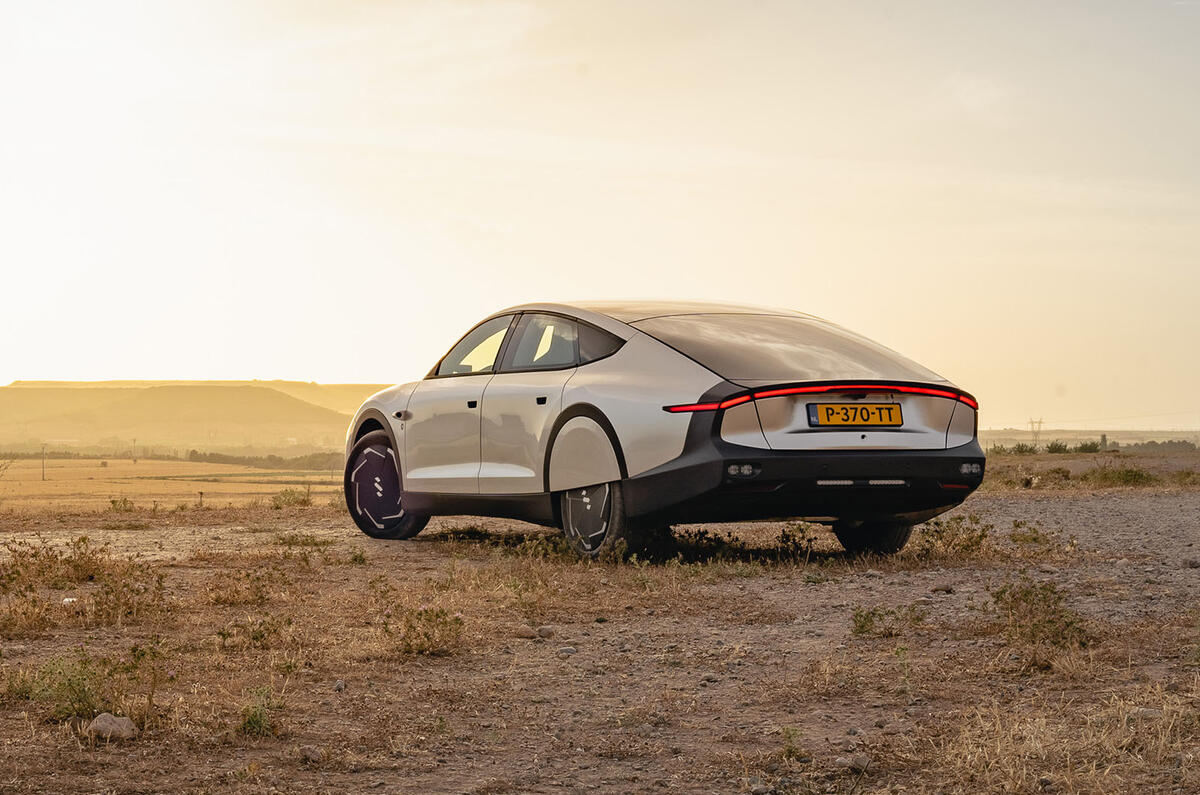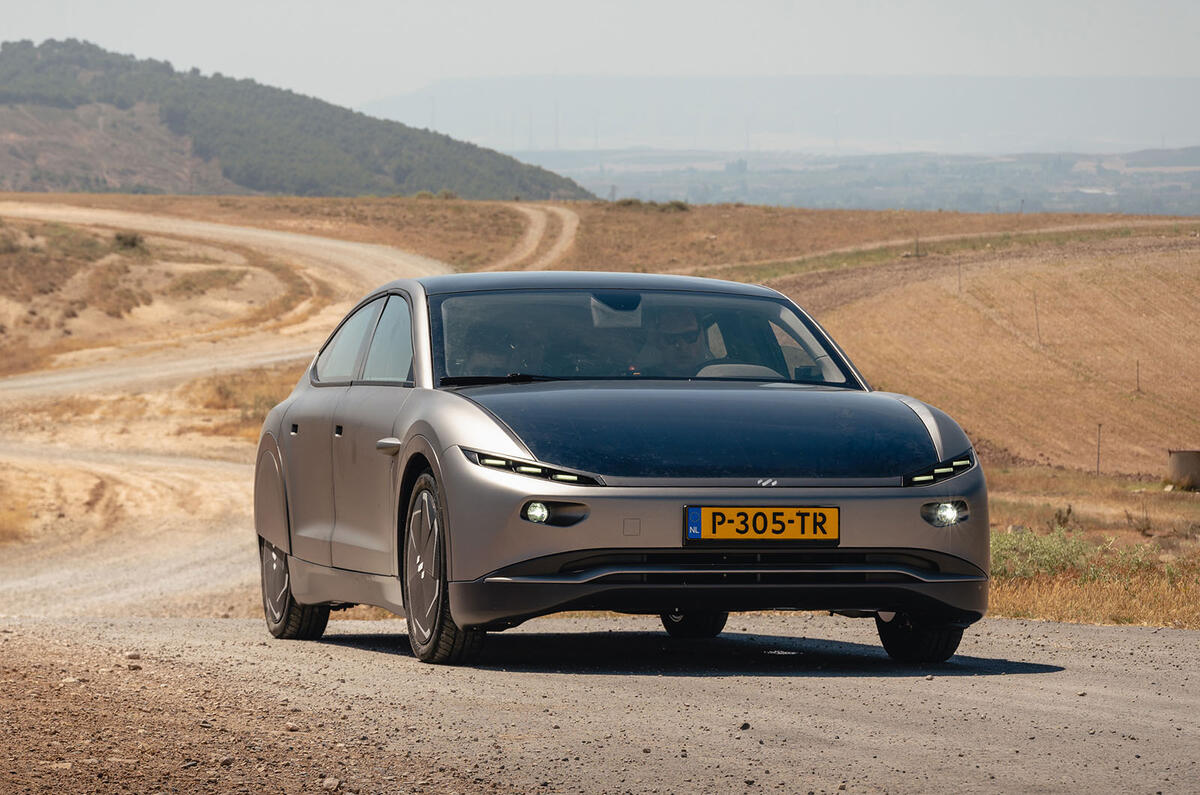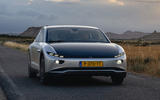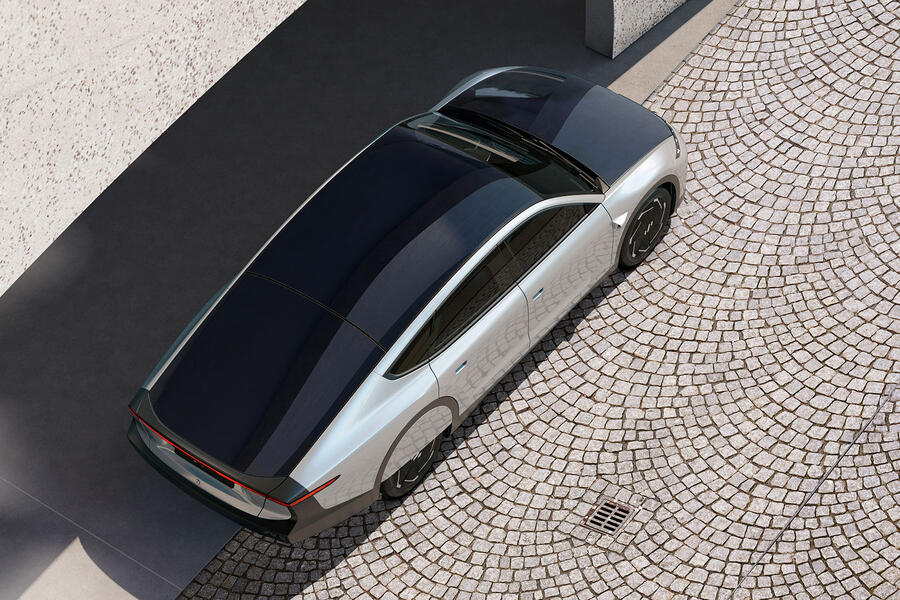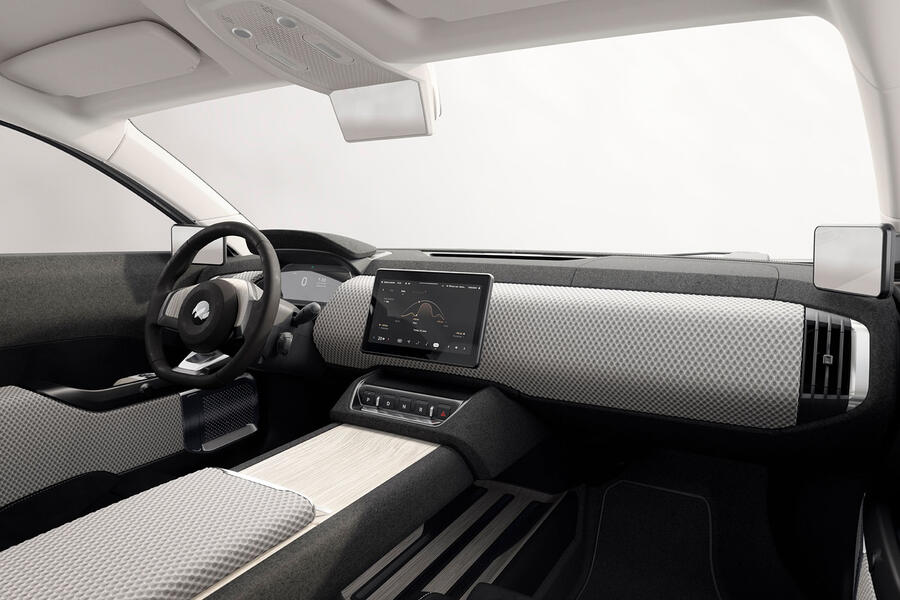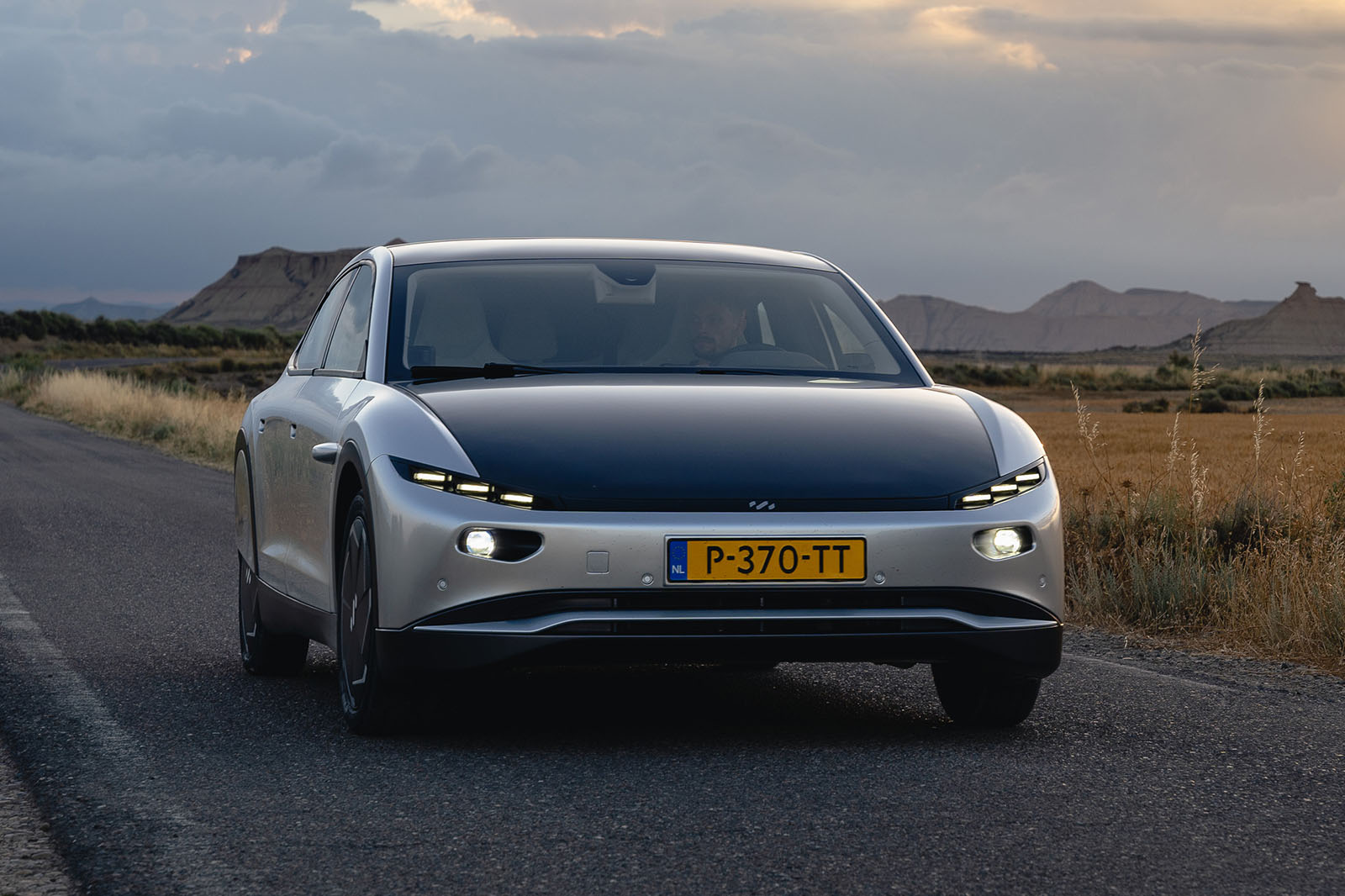You might well consider it pointless to fit a handful of solar cells onto an electric car with an enormous battery – but let me introduce you to the Lightyear 0.
Lightyear was set up by a Solar Car Challenge team from the Eindhoven University of Technology, and the 0 is the culmination of a first decade of research and development. It’s not mainstream, to be clear. Only 964 examples will be made (because there are 964 trillion kilometres in a light year) and they will cost an eye-popping €250,000 (£215,230) each.
To say that the 0 looks like nothing else on the road would be an understatement. From various angles, it looks either like a squashed and lengthened Toyota Prius or a literal spaceship (not unlike the Mercedes Vision EQXX concept). It’s not ugly per se, but it helps a great deal if you can appreciate function over form.
Aerodynamics rule the day: the drag coefficient is claimed to be lower than 0.19 Cd. Between the covered wheels, the active grille shutters and the absurdly long (5083mm) body, just about everything on the exterior has been fashioned to make air slide smoothly. Cameras take the place of side mirrors and screens inside show what’s beside you. There’s a digital rear-view mirror, too, since the cabin’s rear is covered in solar cells.
For a prototype, this car is remarkably well put together. There are no significant rattles and the interior is mostly finished.


